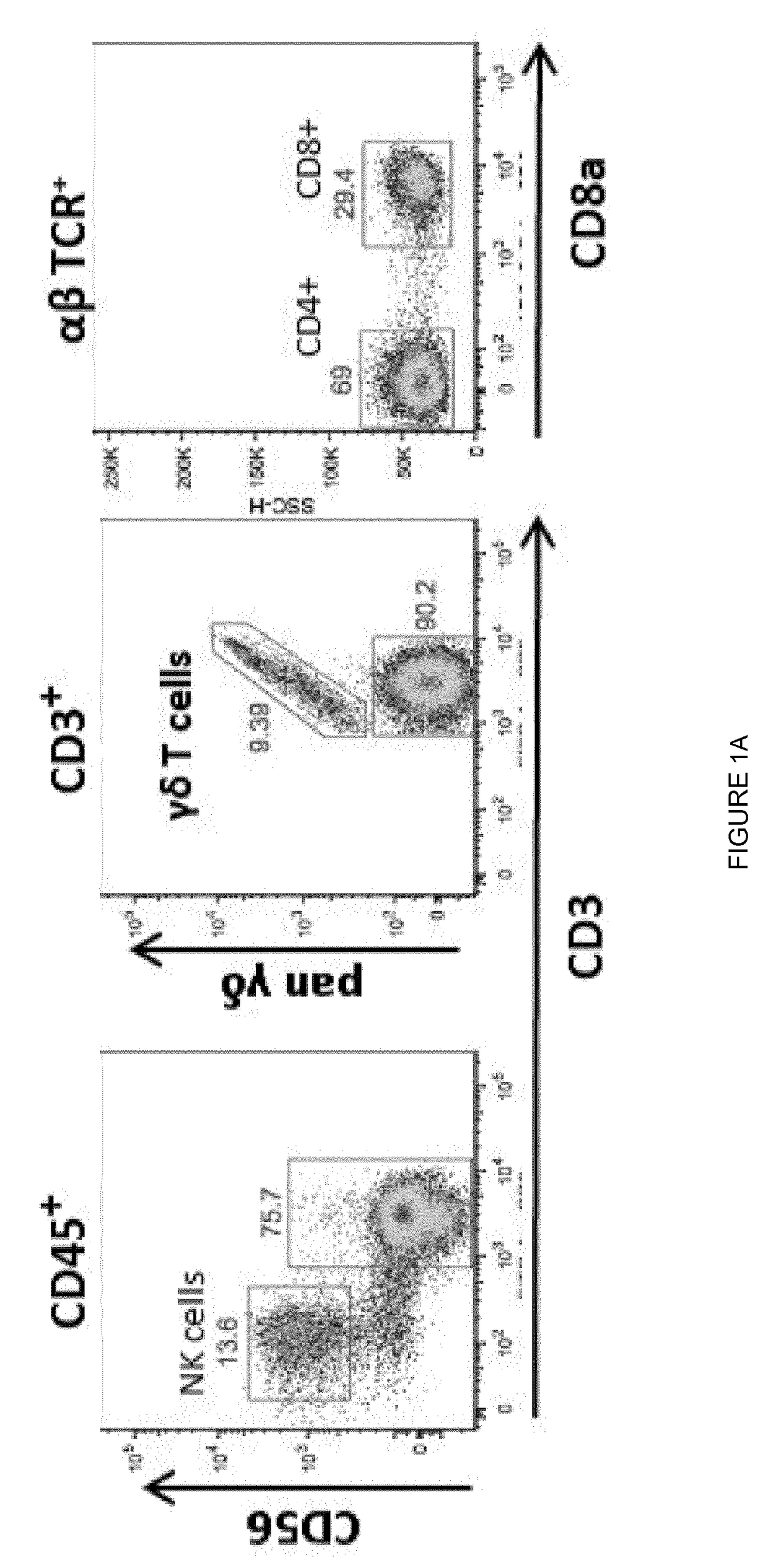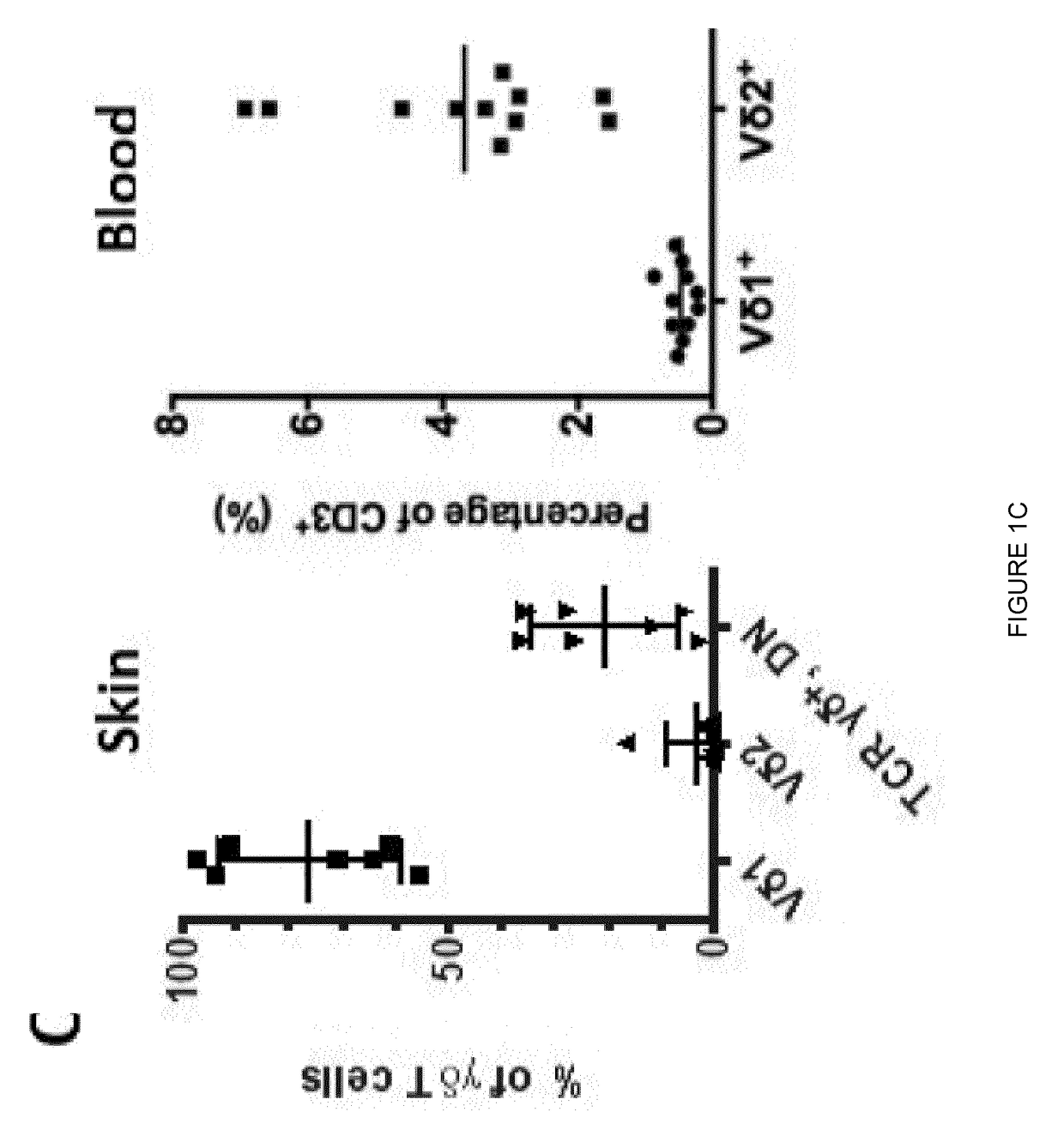Expansion of non-haematopoietic tissue-resident gamma delta t cells and uses of these cells
a technology of gamma delta t cells and non-haematopoietic tissue, which is applied in the field of expansion of non-haematopoietic tissue-resident gamma delta t cells and uses of these cells, can solve the problems of reducing the potential for cytotoxicity, cellular exhaustion, and many questions
- Summary
- Abstract
- Description
- Claims
- Application Information
AI Technical Summary
Benefits of technology
Problems solved by technology
Method used
Image
Examples
Embodiment Construction
[0087]Gamma delta T cells (γδ T cells) represent a small subset of T cells that express on their surface a distinct, defining T-cell receptor (TCR). This TCR is made up of one gamma (γ) and one delta (0) chain.
[0088]There are two major sub-types of human γδ T cells: one that is dominant in the peripheral blood and one that is dominant in non-haematopoietic tissues.
[0089]The non-haematopoietic tissue localization of the second human γδ T cell subtype makes it harder to sample and there has been no established means for culturing the cells. To meet this need, the present invention relates to a method of expanding ire non-haematopoietic tissue-resident γδ T cells, alternatively referred to herein as non-haematopoietic tissue-native γδ T cells. These γδ T cells are ordinarily resident in non-haematopoietic tissues. Non-haematopoietic tissue-resident γδ T cells for use as described herein may originate from or be obtained from a non-haematopoietic tissue. Non-haematopoietic tissues may c...
PUM
 Login to View More
Login to View More Abstract
Description
Claims
Application Information
 Login to View More
Login to View More - R&D
- Intellectual Property
- Life Sciences
- Materials
- Tech Scout
- Unparalleled Data Quality
- Higher Quality Content
- 60% Fewer Hallucinations
Browse by: Latest US Patents, China's latest patents, Technical Efficacy Thesaurus, Application Domain, Technology Topic, Popular Technical Reports.
© 2025 PatSnap. All rights reserved.Legal|Privacy policy|Modern Slavery Act Transparency Statement|Sitemap|About US| Contact US: help@patsnap.com



